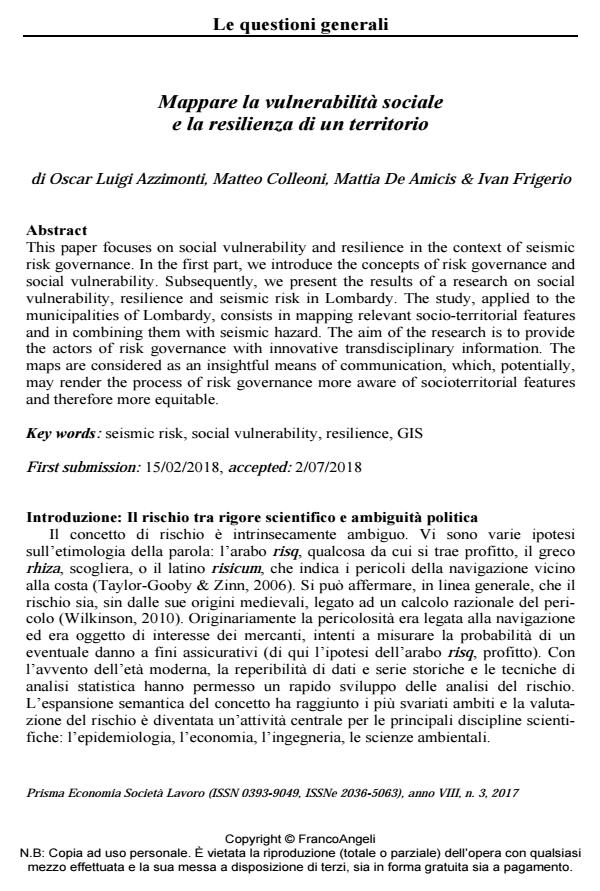Mappare la vulnerabilità sociale e la resilienza di un territorio
Journal title PRISMA Economia - Società - Lavoro
Author/s Oscar Luigi Azzimonti, Matteo Colleoni, Mattia De Amicis, Ivan Frigerio
Publishing Year 2018 Issue 2017/3
Language Italian Pages 11 P. 14-24 File size 333 KB
DOI 10.3280/PRI2017-003002
DOI is like a bar code for intellectual property: to have more infomation
click here
Below, you can see the article first page
If you want to buy this article in PDF format, you can do it, following the instructions to buy download credits

FrancoAngeli is member of Publishers International Linking Association, Inc (PILA), a not-for-profit association which run the CrossRef service enabling links to and from online scholarly content.
This paper focuses on social vulnerability and resilience in the context of seismic risk governance. In the first part, we introduce the concepts of risk governance and social vulnerability. Subsequently, we present the results of a research on social vulnerability, resilience and seismic risk in Lombardy. The study, applied to the municipalities of Lombardy, consists in mapping relevant socio-territorial features and in combining them with seismic hazard. The aim of the research is to provide the actors of risk governance with innovative transdisciplinary information. The maps are considered as an insightful means of communication, which, potentially, may render the process of risk governance more aware of socioterritorial features and therefore more equitable.
Keywords: Seismic risk, social vulnerability, resilience, GIS
Oscar Luigi Azzimonti, Matteo Colleoni, Mattia De Amicis, Ivan Frigerio, Mappare la vulnerabilità sociale e la resilienza di un territorio in "PRISMA Economia - Società - Lavoro" 3/2017, pp 14-24, DOI: 10.3280/PRI2017-003002